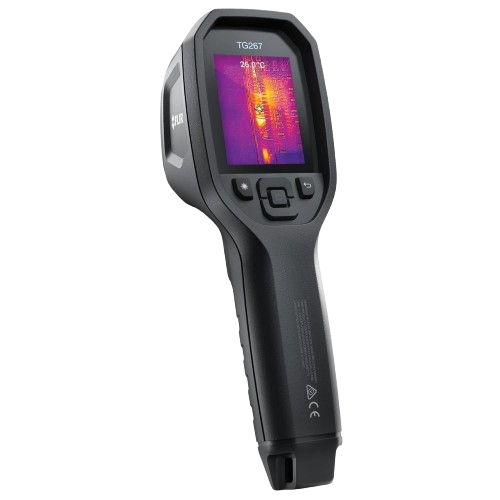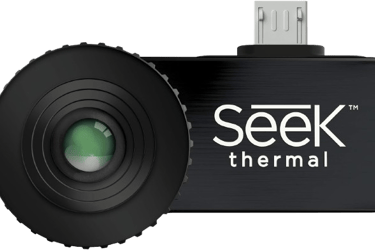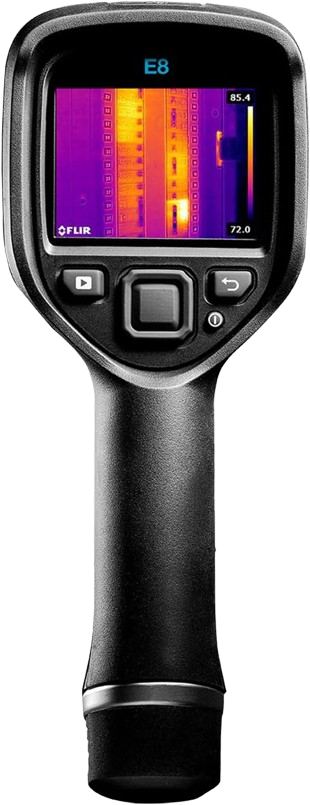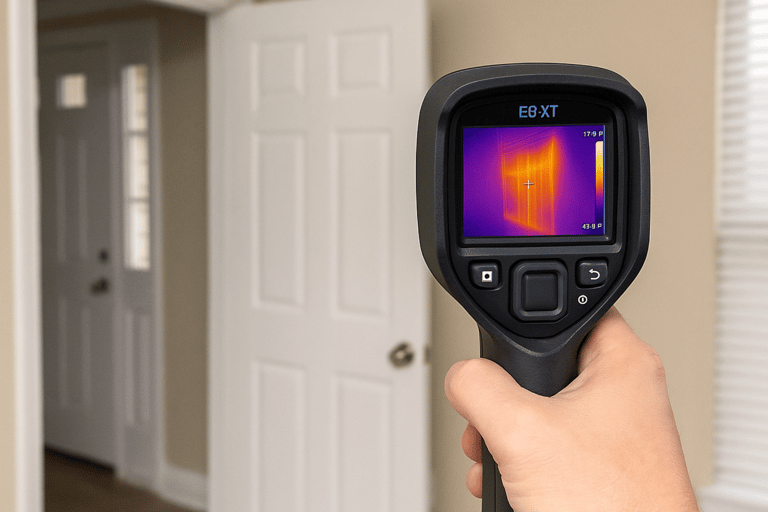The 3 Types of Thermal Cameras You Should Know (And Which One You Actually Need)
Learn the differences between budget, mid-tier, and professional thermal cameras. This guide compares the top models—Seek Thermal, FLIR TG267, and FLIR E8-XT—so you can pick the right thermal camera for home, jobsite, or industrial use.
5/2/20254 min read
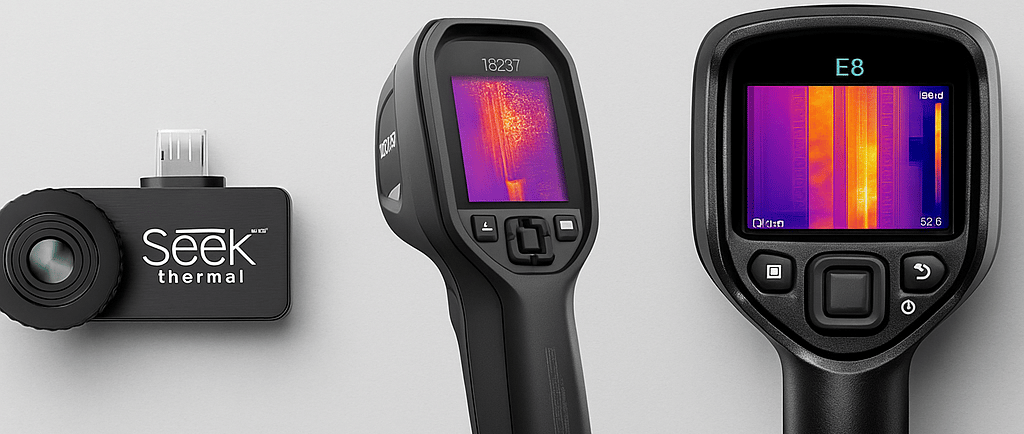

Why Thermal Cameras Matter in 2025
Thermal cameras detect heat. That’s it. But that one feature opens the door to spotting:
Faulty electrical circuits
Water leaks in drywall
Overheating appliances
Hidden animals or pests
Insulation gaps and energy loss
HVAC malfunctions
Most people use the wrong tool for the job. They overspend on features they don’t use or go too cheap and miss critical data.
This guide breaks down three types of thermal imaging cameras:
Budget thermal camera for casual use
Mid-tier thermal camera for trades and contractors
High-end thermal imaging camera for professionals and engineers
Let’s compare them, break down the pros and cons, and show you where to buy the best thermal camera for your needs.
1. Budget Pick: Seek Thermal Compact
Link: Seek Thermal Compact - Available on Amazon
Price: Around $250
Resolution: 206 x 156
Temperature Range: -40°F to 626°F
Connection: Plugs into smartphone (Lightning or USB-C)
Pros:
Affordable thermal imaging camera for beginners
Small and portable
Compatible with Android and iOS
Great image quality for the price
Cons:
Battery depends on your phone
No visual (MSX) overlay
App required to operate
Best For:
Homeowners
Apartment maintenance
Light energy audits
What You Get:
Point-and-shoot interface via your phone
Image capture, spot metering, emissivity settings
App interface to store photos or analyze heat patterns
2. Mid-Tier: FLIR TG267 Thermal Camera
Link: FLIR TG267 - Available on Amazon
Price: Around $500
Resolution: 160 x 120
Temperature Range: -13°F to 716°F
Features: LCD screen, laser pointer, rugged body
Pros:
Standalone infrared thermal camera
Rugged and durable
Great for HVAC, electrical, plumbing
Image storage onboard
Cons:
No wireless or app control
No touchscreen
Not designed for building reports
Best For:
Handymen
General contractors
HVAC techs
What You Get:
Built-in screen so you don’t need a phone
Laser pointer to target hot spots
Easy temperature readouts
This is the best thermal camera for HVAC techs and tradespeople. Durable enough for fieldwork. Fast enough to use every day.
3. Pro-Level: FLIR E8-XT Professional Thermal Imaging Camera
Link: FLIR E8-XT - Available on Amazon
Price: Around $3,500
Resolution: 320 x 240
Temperature Range: -4°F to 1022°F
Features: MSX overlay, Wi-Fi, 3" color screen, FLIR Tools compatibility
Pros:
Super sharp thermal images
Wide temperature range
Built for field engineers
Report-ready thermal and visual imagery
Cons:
Expensive
Too advanced for casual users
Best For:
Energy auditors
Building inspectors
Fire investigators
Utility and manufacturing engineers
What You Get:
Rugged build with drop resistance
MSX visual overlay technology
Export images and build reports
If you deal with commercial spaces, industrial systems, or need to produce detailed reports—this is the best professional thermal camera to trust.
Which Thermal Imaging Camera Should You Buy?
Type Model Price Best For
If you don’t need reports or wide temperature ranges, start cheap. If you plan to use thermal imaging more than once a week for work, go mid-tier. If this is part of your profession—don’t cut corners. Get the pro tool.
Thermal Camera Features to Consider
Thermal Resolution
Higher resolution = clearer images. For context:
80x60: entry-level thermal camera
160x120: mid-tier thermal camera
320x240 or higher: professional-grade thermal imaging
Refresh Rate
A faster refresh rate makes the image less choppy. You want at least 9Hz. Some pro models offer 30Hz or more.
Battery Life
Phone-based: drains your phone
Mid-tier: built-in battery, 4–5 hours
Pro: rechargeable, 6+ hours
Build Quality
Budget: plastic casing
Mid-tier: rugged housing, drop-tested
Pro: IP54+ rated, field-tested
Real-Life Scenarios Using Thermal Cameras
Electrician: Use FLIR TG267 to identify hot wires behind panels
Landlord: Use Seek Compact to find air leaks in rentals
Inspector: Use FLIR E8-XT to document issues for reports
Plumber: Use TG267 to find pipe leaks without breaking walls
DIY Enthusiast: Use Compact model to check insulation or overheating electronics
How We Tested These Thermal Cameras
We used each model across three job sites:
A small rental unit
A construction site
A commercial energy audit
We looked at ease of use, thermal image clarity, reporting tools, and cost value.
Final Thoughts on the Best Thermal Imaging Cameras for 2025
Don’t waste money on the wrong tool. Buy what fits your actual workload.
If you’re unsure, start with a mid-tier unit like the TG267. It works in almost every job.
For questions or custom recommendations, reach out to us.
Need a Quote or Want to See Our Portfolio?
We use these thermal cameras in real-world jobs. If you want a quote on your next inspection, repair, or energy audit, let’s talk.
Contact us for a project quote
Check out our thermal camera portfolio for visual examples
Drop questions in the comments
Related Resources:
Second Build helps you find the right tools and put them to work. Every time.
